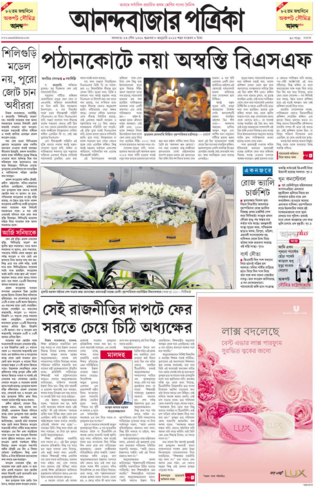

So much so that by 1932 it had to invest in a fast-paced rotary machine, capable of printing 25,000 copies per hour. But like the proverbial phoenix it resurfaced and recaptured public adulation and patronage. In 1930 it even went out of circulation for over six months (May 2 – October 31). Like its counterparts in other languages Anandabazar Patrika too had to suffer the draconinan press laws promulgated by the British administration. This became a tradition which in turn helped the growth of Bengali literature in no uncertain terms. In 1926, Anandabazar Patrika published its first Puja special issue, Sharadiya Shankhya. It published a 120 120-page special supplement on Calcutta Congress, which was sold out within two hours and second edition was printed on demand. By 1925 it had to increase its page numbers to 16, no mean feat in those periods of low literacy and lower purchasing power. In order to reach readers living in far flung areas, a bi-weekly edition of Anandabazar was started. It soon tied up with Reuters, Associated Press and the Free Press of India. From the beginning Anandabazar Patrika tried to be professional so far news dissemination was concerned.


Priced at two paise it had a first-day circulation of a thousand copies.įounded by Suresh Chandra Majumdar (the proprietor) and Prafulla Chandra Sarkar (the first editor), Anandabazar Patrika started as a four page evening daily. But the British administration took the red colour as a mark of danger, which to a large extent proved true in future. And probably to go with the festive fervour, the first issue was printed in red letter. It was the day of Dolyatra (Holi), the festival of colour. Like the other two newspaper, Anandabazar Patrika too started with a nationalistic mission and with time has become an institution.Īnandabazar Patrika began its momentous journey on 13 March 1922.

What is Malayala Manorama to a Malayali, Samaja to an Odia, Anandabazar Patrika is to a Bengali: not just a newspaper, but a part of his linguistic identity.


 0 kommentar(er)
0 kommentar(er)
